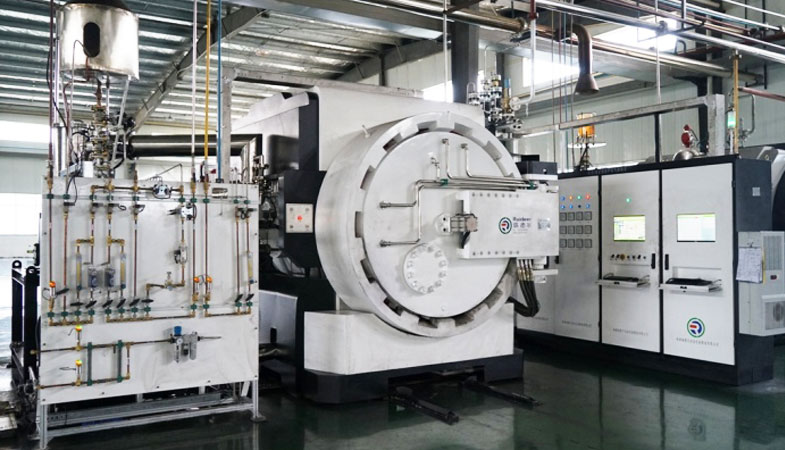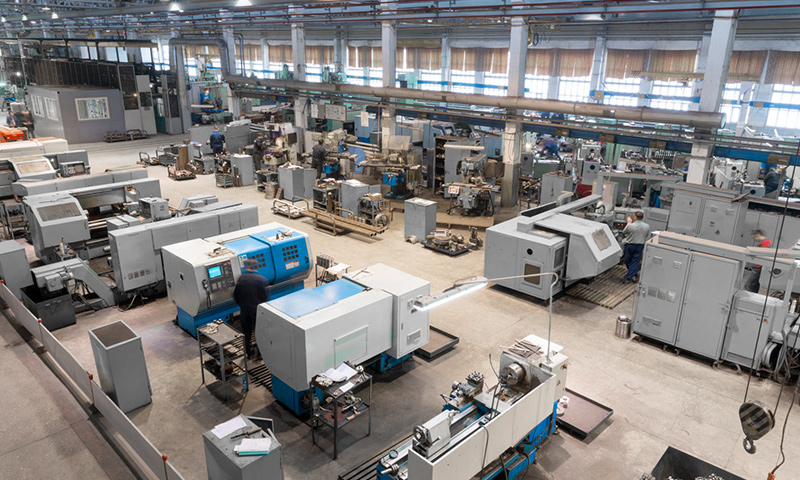
Carbide is made of powder of one or several refractory carbides (tungsten carbide, titanium carbide, etc.) as the main component, and metal powder (cobalt, nickel, etc.) alloy. It is mainly used in the manufacture of high-speed cutting tools and hard and tough material cutting tools, as well as in the production of cold-working molds, measuring tools and high wear-resistant parts that are not subject to impact and vibration.
Characteristics of cemented carbide
 High hardness, wear resistance and red hardness:The hardness of cemented carbide at room temperature can reach 86~93HRA, which is equivalent to 69~81HRC. It can maintain high hardness at 900~1000°C and has excellent wear resistance. Compared with high-speed tool steel, the cutting speed can be 4~7 times higher, the service life is 5~80 times longer, and it can cut hard materials with a hardness up to 50HRC.
High hardness, wear resistance and red hardness:The hardness of cemented carbide at room temperature can reach 86~93HRA, which is equivalent to 69~81HRC. It can maintain high hardness at 900~1000°C and has excellent wear resistance. Compared with high-speed tool steel, the cutting speed can be 4~7 times higher, the service life is 5~80 times longer, and it can cut hard materials with a hardness up to 50HRC.
High strength and elastic modulus:The compressive strength of cemented carbide is as high as 6000MPa, and the modulus of elasticity is (4~7)×105MPa, both of which are higher than that of high-speed steel. But its bending strength is low, generally 1000~3000MPa.
Good corrosion resistance and oxidation resistance:Generally, it can resist the corrosion of atmosphere, acid, alkali, etc., and is not easy to oxidize.
The coefficient of linear expansion is small:When working, the shape and size are stable.
Shaped products are no longer processed and regrinded.
Due to the high hardness and brittleness of cemented carbide, no cutting or regrinding will be carried out after powder metallurgy forming and sintering. When reprocessing is required, only electrical machining such as electric spark, wire cutting, electrolytic grinding or special grinding wheel grinding can be used. cut. A product of a certain specification usually made of cemented carbide(such as carbide rods), which is used on the cutter body or mold body by brazing, bonding or mechanical clamping.
Common Carbide
Commonly used cemented carbides are divided into three categories according to their composition and performance characteristics: tungsten-cobalt, tungsten-titanium-cobalt, and tungsten-titanium-tantalum (niobium). The most widely used in production are tungsten-cobalt and tungsten-titanium-cobalt cemented carbide.
Tungsten-cobalt cemented carbide
The main components are tungsten carbide (WC) and cobalt. The grade is represented by the code YG (the initials of the two characters "hard" and "cobalt" in Chinese pinyin), followed by the percentage value of the cobalt content. For example, YG6 means tungsten-cobalt cemented carbide with a cobalt content of 6%, and a tungsten carbide content of 94%.
Tungsten-titanium-cobalt cemented carbide
The main components are tungsten carbide (WC), titanium carbide (TiC) and cobalt. The grade is represented by the code YT (the initials of the two characters "hard" and "titanium" in Chinese pinyin), followed by the percentage value of titanium carbide content. For example, YT15 means tungsten-titanium-cobalt cemented carbide with a titanium carbide content of 15%.
Tungsten, titanium, tantalum (niobium) hard alloys
This type of cemented carbide is also called general-purpose cemented carbide or universal cemented carbide. The main components are tungsten carbide (WC), titanium carbide (TiC), tantalum carbide (TaC) or niobium carbide (NbC) and cobalt. The grade is represented by the code YW (the initials of the two characters "hard" and "wan" in Chinese pinyin) followed by an ordinal number.
Application of cemented carbide
Tool material
 Cemented carbide is used as the largest number of tool materials, and can be used to make turning tools, milling cutters, planers, drills, etc. Among them, tungsten-cobalt hard alloys are suitable for short-chip processing of ferrous metals and non-ferrous metals and non-metallic materials, such as cast iron, cast brass, bakelite, etc.; Chip processing. Among the same alloys, those with more cobalt content are suitable for rough machining, and those with less cobalt content are suitable for fine machining. General-purpose cemented carbide has a much longer processing life for difficult-to-machine materials such as stainless steel than other cemented carbides.
Cemented carbide is used as the largest number of tool materials, and can be used to make turning tools, milling cutters, planers, drills, etc. Among them, tungsten-cobalt hard alloys are suitable for short-chip processing of ferrous metals and non-ferrous metals and non-metallic materials, such as cast iron, cast brass, bakelite, etc.; Chip processing. Among the same alloys, those with more cobalt content are suitable for rough machining, and those with less cobalt content are suitable for fine machining. General-purpose cemented carbide has a much longer processing life for difficult-to-machine materials such as stainless steel than other cemented carbides.
Mold material
Cemented carbide is mainly used as cold working dies such as cold drawing dies, cold stamping dies, cold extrusion dies, and cold pier dies.
Cemented carbide cold heading dies are required to have good impact toughness, fracture toughness, fatigue strength, bending strength and good wear resistance under the wear-resistant working conditions of impact or strong impact. Usually, medium and high cobalt and medium and coarse-grained alloy grades are selected, such as YG15C.
Generally speaking, the relationship between the wear resistance and toughness of cemented carbide is contradictory: the increase of wear resistance will lead to the decrease of toughness, and the increase of toughness will inevitably lead to the decrease of wear resistance. Therefore, when selecting alloy grades, it is necessary to meet specific use requirements according to the processing object and processing working conditions.
If the selected grade is prone to early cracking and damage during use, the grade with higher toughness should be selected; if the selected grade is prone to early wear and damage during use, it should be selected with higher hardness and better wear resistance. . The following grades: YG15C, YG18C, YG20C, YL60, YG22C, YG25C From left to right, the hardness decreases, the wear resistance decreases, and the toughness increases; otherwise, the opposite is true.
Measuring tools and wear-resistant parts
Cemented carbide is used for wear-resistant surface inlays and parts of measuring tools, precision bearings of grinding machines, guide plates and guide rods of centerless grinding machines, and wear-resistant parts such as the top of lathes.